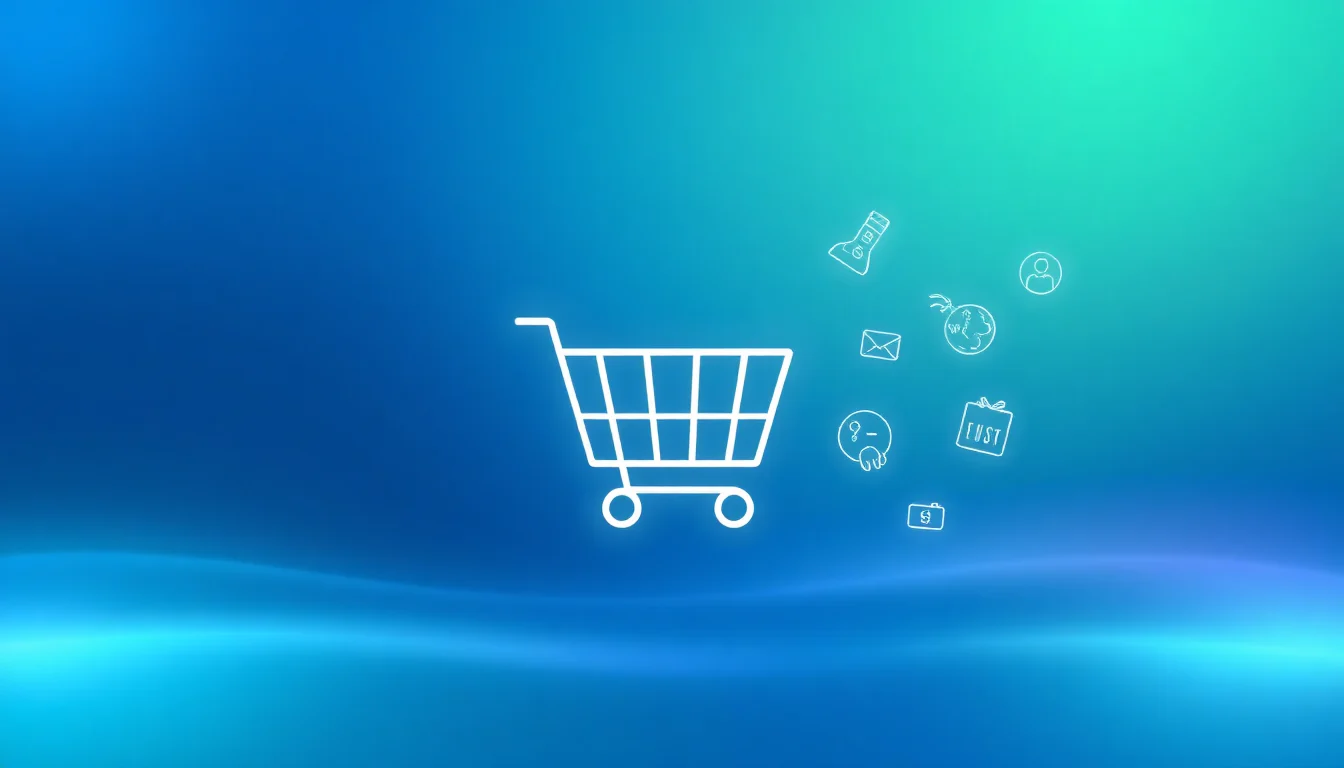

As we step into the year 2025, the world of e-commerce continues to evolve at a rapid pace. For Shopify store owners, staying on top of inventory management has become increasingly crucial to maintaining a competitive edge. With the ever-expanding Shopify app ecosystem, the options for streamlining inventory processes can be overwhelming.
In this comprehensive guide, we'll dive into the top 5 Shopify apps for inventory management in 2025, equipping you with the knowledge to make an informed decision for your business.
The Importance of Inventory Management for Shopify Stores
Effective inventory management is the backbone of a successful Shopify store. It ensures that you have the right products in stock, at the right time, to meet customer demand. Poorly managed inventory can lead to stockouts, lost sales, and frustrated customers - a recipe for disaster in the highly competitive e-commerce landscape.
Moreover, with the rise of omnichannel selling, seamless inventory visibility across all sales channels has become a necessity. Shopify store owners must be able to track and manage their inventory in real-time, whether it's in their physical store, online, or across multiple fulfillment centers.
Shopify's Thriving App Ecosystem
Shopify has long been recognized for its robust app ecosystem, which provides store owners with a vast array of tools and solutions to enhance their operations. When it comes to inventory management, Shopify's app store is teeming with innovative apps designed to streamline this critical aspect of running an e-commerce business.
From advanced inventory tracking and forecasting to automated reordering and multichannel synchronization, the Shopify app ecosystem offers a wide range of options to cater to the diverse needs of store owners.
Top 5 Shopify Apps for Inventory Management in 2025
1. Inventory Planner
Key Features:
Real-time inventory tracking across multiple sales channels
Automated purchase order generation based on sales forecasts
Intelligent inventory optimization algorithms
Detailed reporting and analytics
Pros:
Seamless integration with Shopify and other e-commerce platforms
Intuitive user interface for easy management
Advanced forecasting capabilities to prevent stockouts
Customizable alerts and notifications
Cons:
Higher pricing tier for enterprise-level features
Limited integration with certain third-party logistics providers
Pricing:
Basic plan: $49/month
Pro plan: $199/month
Enterprise plan: Custom pricing
2. Stocky
Key Features:
Multichannel inventory synchronization
Barcode scanning for efficient inventory counting
Automated low stock alerts and reordering
Detailed inventory reports and dashboards
Pros:
Affordable pricing for small to medium-sized businesses
Seamless integration with Shopify and other sales channels
User-friendly mobile app for on-the-go inventory management
Robust inventory forecasting and demand planning
Cons:
Limited customization options for advanced users
Potential compatibility issues with certain Shopify themes
Pricing:
Starter plan: $29/month
Growth plan: $99/month
Enterprise plan: Custom pricing
3. Katana
Key Features:
Manufacturing-focused inventory management
Bill of materials (BOM) and production planning
Automated order fulfillment and shipping
Advanced reporting and analytics
Pros:
Specialized for businesses with manufacturing operations
Seamless integration with Shopify, Xero, and other business tools
Intuitive visual production planning interface
Robust inventory optimization and demand forecasting
Cons:
Steeper learning curve for non-manufacturing users
Limited customization options for specific business needs
Pricing:
Starter plan: $99/month
Pro plan: $299/month
Enterprise plan: Custom pricing
4. Cin7
Key Features:
Omnichannel inventory management
Automated purchase orders and supplier management
Advanced inventory reporting and analytics
Integrated point-of-sale (POS) system
Pros:
Comprehensive solution for multi-channel businesses
Seamless integration with Shopify, Amazon, eBay, and more
Robust inventory forecasting and demand planning
Customizable workflows and business rules
Cons:
Higher pricing compared to some competitors
Steep learning curve for complex features
Pricing:
Starter plan: $299/month
Pro plan: $599/month
Enterprise plan: Custom pricing
5. Unleashed
Key Features:
Advanced inventory tracking and control
Automated stock replenishment and reordering
Integrated accounting and invoicing
Multichannel sales and fulfillment management
Pros:
Scalable solution for growing businesses
Seamless integration with Shopify, Xero, and other business tools
Customizable dashboards and reporting
Excellent customer support
Cons:
Relatively higher pricing for smaller businesses
Limited mobile app functionality compared to some competitors
Pricing:
Starter plan: $99/month
Pro plan: $249/month
Enterprise plan: Custom pricing
Comparing the Top 5 Shopify Inventory Management Apps
When it comes to choosing the right inventory management app for your Shopify store, it's essential to consider a variety of factors, including feature set, pricing, and user experience.
Feature Comparison:
Inventory Planner and Cin7 offer the most comprehensive suite of features, including advanced forecasting, multichannel synchronization, and integrated accounting.
Stocky and Unleashed excel in basic inventory tracking, reporting, and automation, making them a good fit for smaller to medium-sized businesses.
Katana stands out with its specialized manufacturing-focused features, such as BOM management and production planning.
Pricing Comparison:
Stocky and Katana offer more affordable pricing options for small to medium-sized businesses.
Cin7 and Unleashed tend to be on the higher end of the pricing spectrum, with their enterprise-level features and customization options.
Inventory Planner strikes a balance between comprehensive features and competitive pricing.
User Experience and Ease of Use:
Stocky and Unleashed are known for their intuitive user interfaces and easy-to-navigate dashboards.
Inventory Planner and Cin7 offer more advanced features, which may require a steeper learning curve for some users.
Katana's manufacturing-focused approach may be better suited for businesses with existing production processes.
Choosing the Right Inventory Management App for Your Shopify Store
When selecting the best inventory management app for your Shopify store, consider the following factors:
Business Size and Complexity:
Smaller businesses may benefit more from simpler, more affordable solutions like Stocky or Unleashed.
Larger, more complex operations may require the advanced features and scalability of Inventory Planner, Cin7, or Katana.
Sales Channels and Integration Needs:
If you sell across multiple platforms, look for apps with robust multichannel integration capabilities, such as Cin7 or Unleashed.
Businesses focused solely on Shopify may find more value in apps with deeper Shopify integration, like Inventory Planner or Stocky.
Specific Business Requirements:
Manufacturers should prioritize apps with specialized features, like Katana's production planning and BOM management.
Businesses with complex accounting needs may benefit from apps with integrated invoicing and financial reporting, such as Cin7 or Unleashed.
Future Trends in Shopify Inventory Management
As we look ahead to the future of Shopify inventory management, a few key trends emerge:
Increased Automation and AI-Driven Forecasting: Expect to see more apps leveraging advanced algorithms and machine learning to automate inventory replenishment, optimize stock levels, and provide highly accurate sales forecasting.
Seamless Omnichannel Integration: With the rise of omnichannel selling, inventory management apps will need to offer even tighter integration with various sales channels, logistics providers, and other business systems.
Enhanced Mobile Capabilities: As store owners and managers become more reliant on mobile devices, inventory management apps will need to provide robust mobile functionality, including barcode scanning, real-time updates, and on-the-go decision-making.
Sustainability and Eco-Friendly Inventory Practices: Consumers are increasingly demanding more sustainable business practices, and inventory management apps may start to incorporate features that help store owners optimize their inventory to reduce waste and environmental impact.
Conclusion
In the ever-evolving world of Shopify e-commerce, effective inventory management has become a critical component of success. By exploring the top 5 Shopify apps for inventory management in 2025, you can make an informed decision that aligns with your business needs and sets you up for long-term growth.
Whether you're a small business owner or running a large, multi-channel operation, the right inventory management app can streamline your processes, improve customer satisfaction, and give you a competitive edge in the dynamic Shopify marketplace. As you navigate the options, remember to consider your specific requirements, budget, and the future trends shaping the industry. With the right tools and strategies in place, you can conquer the challenges of inventory management and thrive in the exciting world of Shopify e-commerce.